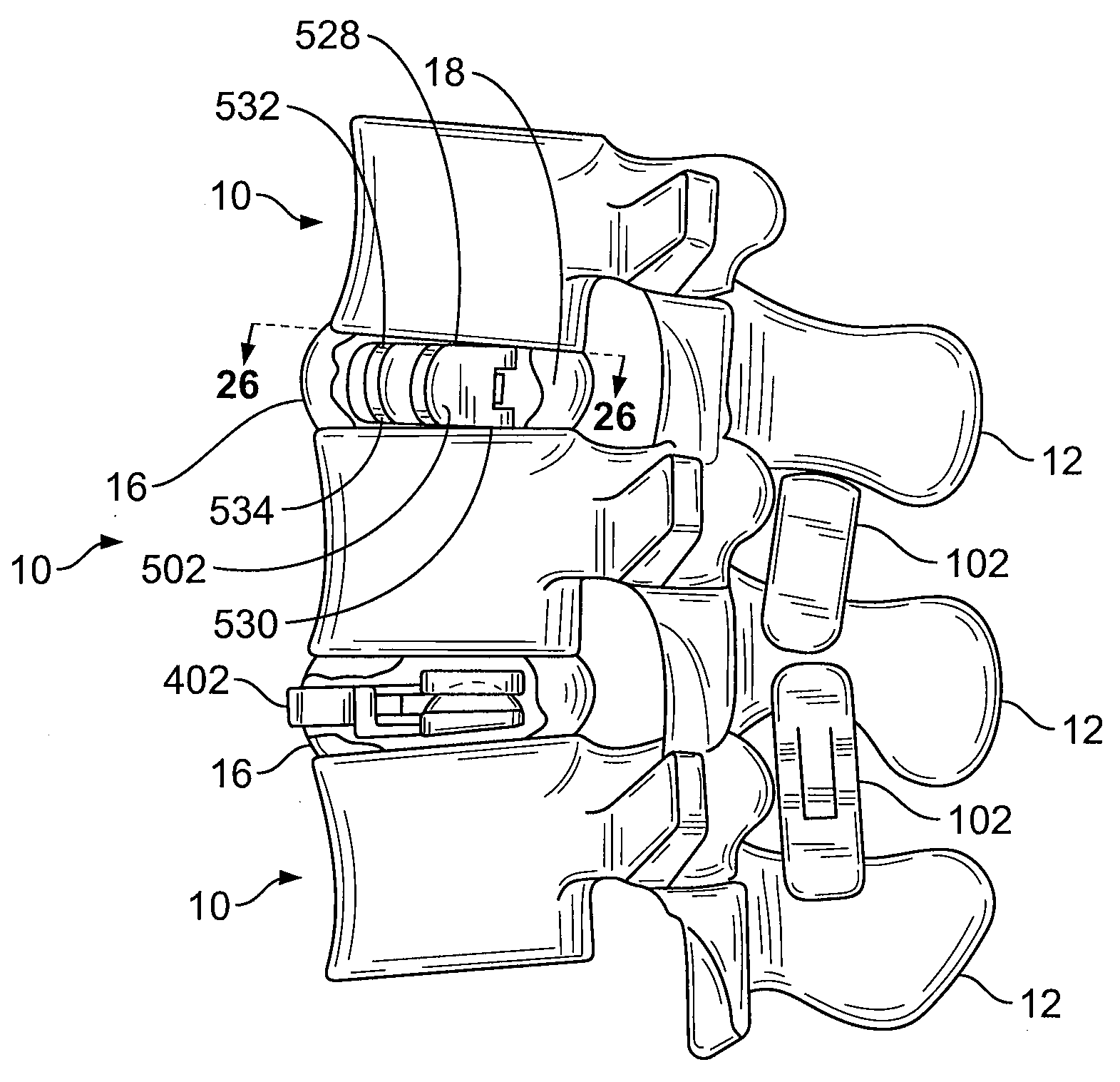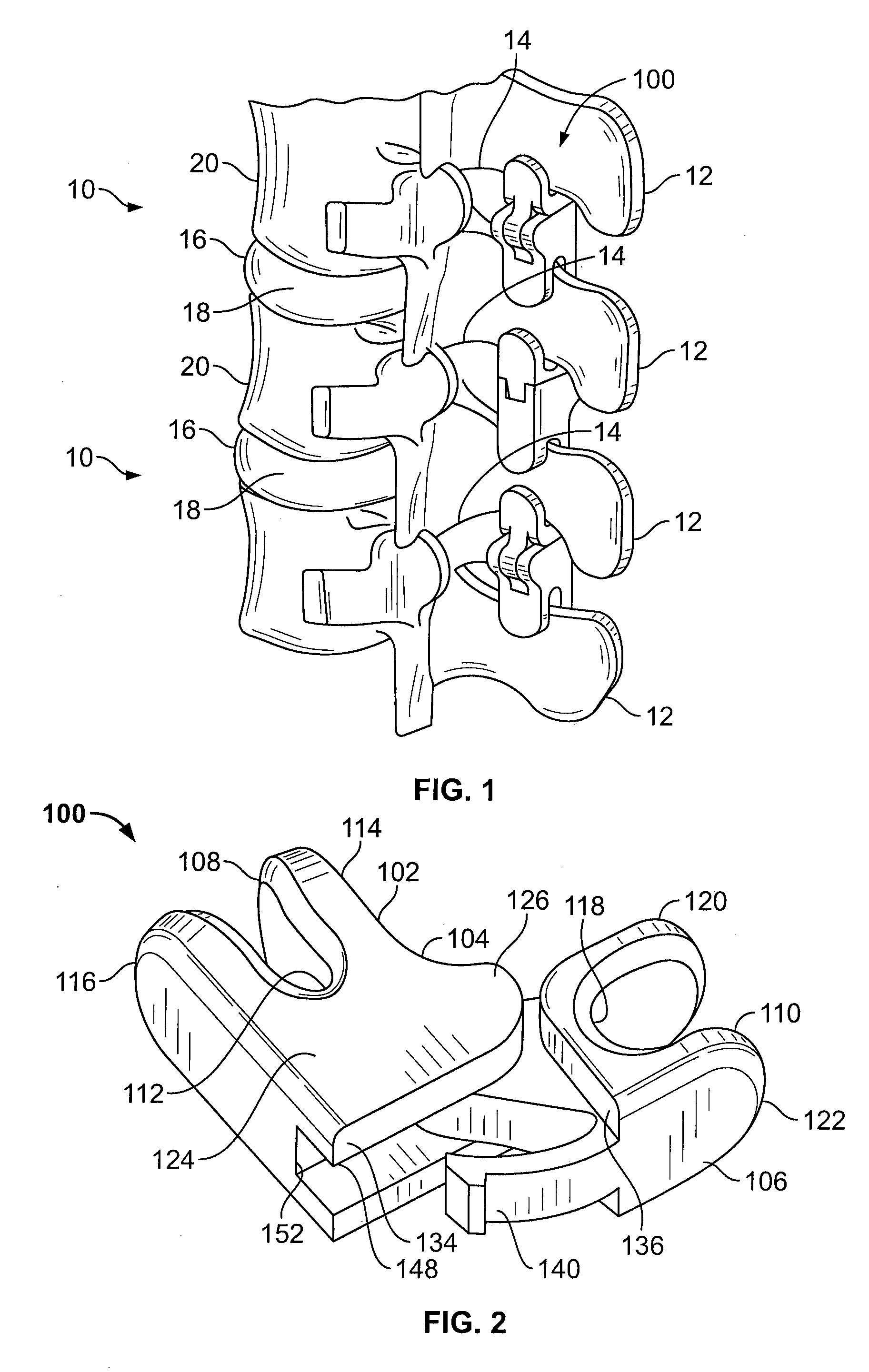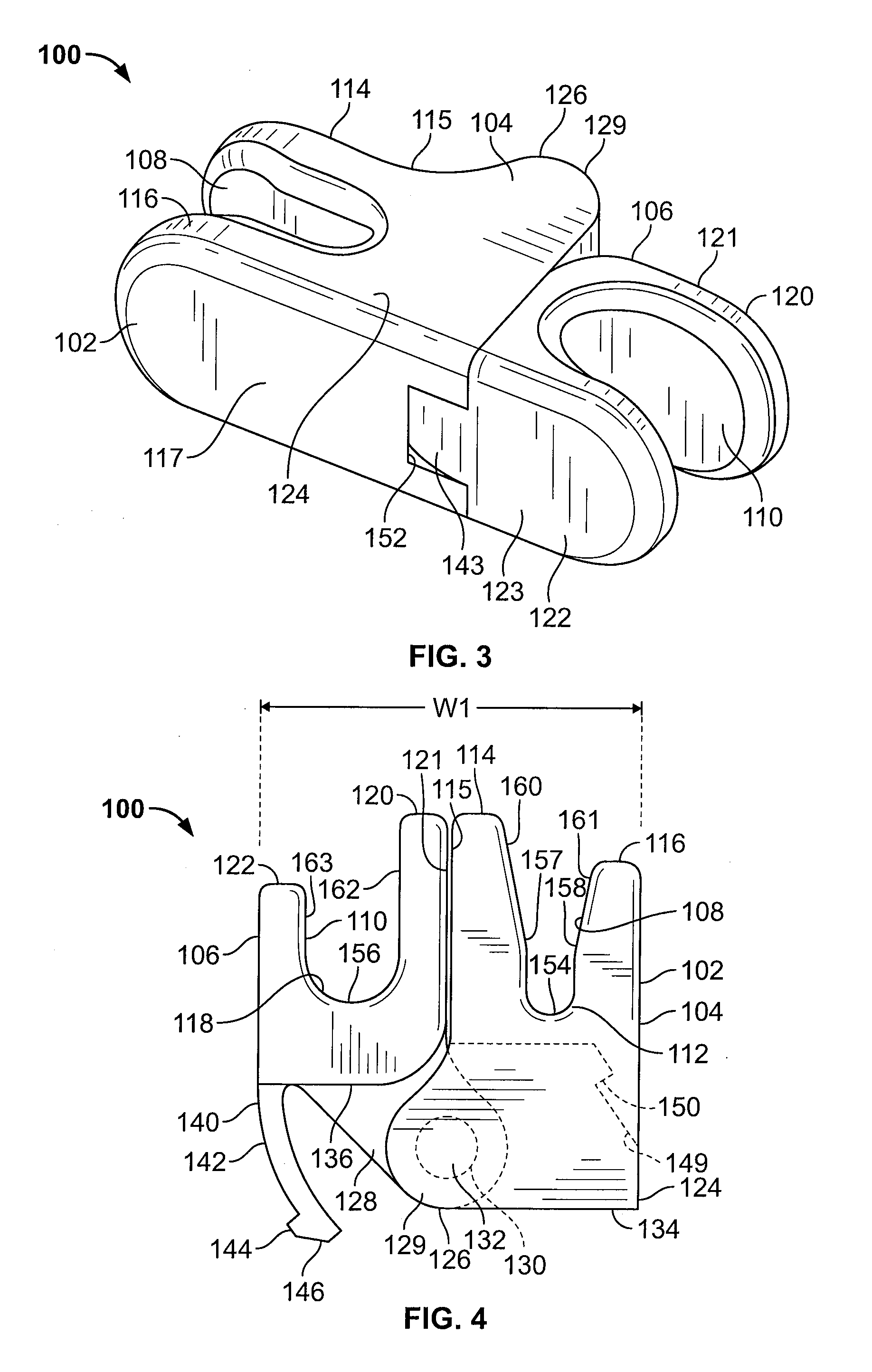Intervertebral Implant Devices and Methods for Insertion Thereof
a technology of intervertebral implants and implants, which is applied in the field of intervertebral implant devices and methods for insertion thereof, can solve the problems of spinal nerve roots compression, pain or limited physical mobility of people, and reduced mobility of peopl
- Summary
- Abstract
- Description
- Claims
- Application Information
AI Technical Summary
Benefits of technology
Problems solved by technology
Method used
Image
Examples
Embodiment Construction
[0131]With reference to FIGS. 1-26, an implant device is shown configured in accordance with various aspects of the invention for being implanted at multiple different locations between adjacent vertebrae 10, including, for example, between the spinous processes 12, between laminar regions 14, in an opening in the annulus 16, and / or in the intervertebral space 18 between adjacent vertebral bodies 20.
[0132]With reference to FIGS. 1-6, implant device 100 is shown in accordance with one aspect of the invention. Implant device 100 comprises an implant body 102 configured for being positioned between spinous processes 12 of adjacent vertebrae 10. The implant body 102 includes a first portion or member 104 and a second portion or member 106 adjustably interconnected such that the implant body 102 can be arranged in a compact orientation (as shown in FIG. 4, for example), an extended orientation (as shown in FIG. 6, for example), or an intermediate orientation (as shown in FIG. 5, for exam...
PUM
 Login to View More
Login to View More Abstract
Description
Claims
Application Information
 Login to View More
Login to View More - R&D
- Intellectual Property
- Life Sciences
- Materials
- Tech Scout
- Unparalleled Data Quality
- Higher Quality Content
- 60% Fewer Hallucinations
Browse by: Latest US Patents, China's latest patents, Technical Efficacy Thesaurus, Application Domain, Technology Topic, Popular Technical Reports.
© 2025 PatSnap. All rights reserved.Legal|Privacy policy|Modern Slavery Act Transparency Statement|Sitemap|About US| Contact US: help@patsnap.com



